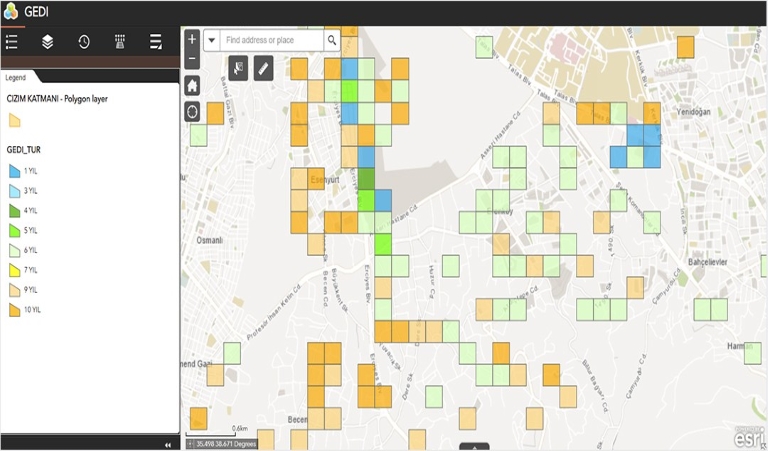Turkcell is a digital operator headquartered in Türkiye, serving customers with its unique portfolio of digital services along with voice, messaging, data, and Internet Protocol TV (IPTV) services on its mobile and fixed networks.
Turkcell companies operate in four countries: Türkiye, Ukraine, Belarus, and Northern Cyprus. Turkcell launched Cellular services in its home country on April 1, 2016, deploying Advanced LTE technology and three carrier aggregation technologies in 81 cities. Turkcell offers fiber-optic internet speed of up to 10 gigabits per second (Gbps) with its fiber to the home (FTTH) services. Turkcell reported TRY9.4 billion revenue in Q3 2021, with total assets of TRY57.3 billion as of September 30, 2021. Turkcell has been listed on the New York Stock Exchange (NYSE) and the Borsa Istanbul exchange (BIST) since July 2000 and is the only NYSE-listed company in Türkiye.
Challenge
For two decades, Turkcell—like many telecommunications providers throughout the world—had a practice of assessing customer demand. However, Turkcell was looking to be more surgical in understanding where customer demand is expected to come from over the next 10 years. Large volumes of socioeconomic and infrastructure data were available, but there was the question of how to bring all this information together into pembelajaran mesin models that would help Turkcell sales staff members know how to accurately mobilize and prioritize their sales activities.

When assessing what it would take to get the business to where it wanted to be, the team at Turkcell identified a few key challenges and goals. The team wanted to provide the organization a set of tools and resources designed to achieve the following:
- Integrate existing large volumes of data, prepare all datasets, and train machine learning models
- Create a common tool for sales representatives and marketing staff to see where to focus their sales activities
- Analyze historical data and leverage machine learning and artificial intelligence (AI) to best forecast market growth in terms of both product type and location
- Leverage the power of location intelligence to identify areas for build-out
- Model and detail timelines for return on capital investment, aiding the planning and engineering teams in the prioritisation of infrastructure build-out
Solution
To meet the needs of the business and improve capabilities, the Turkcell team leveraged ArcGIS technology, including ArcGIS Pro, ArcGIS ModelBuilder, and machine learning to develop the web app GEDI. Creating this application consisted of integrating over 80 individual categories of data. The diverse datasets included speed test data from Esri partner Ookla, and datasets focused on areas such as population indicators, income and expenditure indicators, socioeconomic development, regional statistics, and infrastructure data, which allowed the team to create models and analyze information.
The company's two-decade-long practice with this type of data helped Turkcell select the best model and machine learning method. The Turkcell team first tried the Principal Component Analysis (PCA) method in order to see the distribution of the generated grid data as well as the effect of the 80 individual categories. Then the team used Recursive Feature Elimination (RFE) and opted for the XGBoost algorithm. Besides providing a high accuracy rate, XGBoost was suitable for the data structure used. Turkcell solved the balancing problem in data to improve learning and increase the data's accuracy. Massaging and cleaning the data was critical to reach the best output. Machine learning continued until reaching the best recall score for each class.


In order to gain the best possible insight, the team created and utilised a grid of over 290,000 sections, allowing the team to see much smaller areas. This empowered the organization to predict where demand will come from while also quickly highlighting the time it would take to reach the desired product uptick of over 40 percent area penetration. With this analysis, the sales and marketing teams can prioritise areas for build-out with the planning and engineering teams, allowing for maximised capital allocation for new infrastructure.
Results
Through using ArcGIS technology and location-based intelligence such as infrastructure asset and socioeconomic data, and combined with existing subscriber data, Turkcell was able to utilise machine learning to estimate subscriber uptick rates in new investment areas. By including 80 diverse data categories and leveraging machine learning, five sales teams managing seven different regions verified the models were yielding an accuracy rate of over 80 percent. These results empowered the Turkcell team to greatly improve its market strategy and the tactics associated with capital investment and timing of infrastructure build-out.
"Where should I invest, and when will I get a response? It is a common problem for all companies. We came together as strategic planning and location intelligence teams under the Access Transport Network unit within Turkcell Access Network Capabilities and created a modern analysis method using artificial intelligence and pembelajaran mesin algorithms based on our past analysis experiences. In these studies, we have seen how valuable GIS technologies are.
Semih Öğün and Faruk Bakan, Location Intelligence Manager & Access Transport Network Strategic Planning Manager.
User
Turkcell provides services to 34.4 million subscribers via fixed and mobile networks throughout Türkiye.
Challenge
Turkcell needed to develop a tool providing increased efficiency of network build-out while maximising return on investment.
Solution
A simple-to-use app built with ArcGIS empowers the organization to quickly identify and prioritise network build-out and sales activity.
Results
Turkcell realised a data accuracy rate of over 80 percent in market growth and consumer demand, allowing for improved infrastructure and sales activities.
Partner
Turkcell leveraged speed test data available by Ookla.
